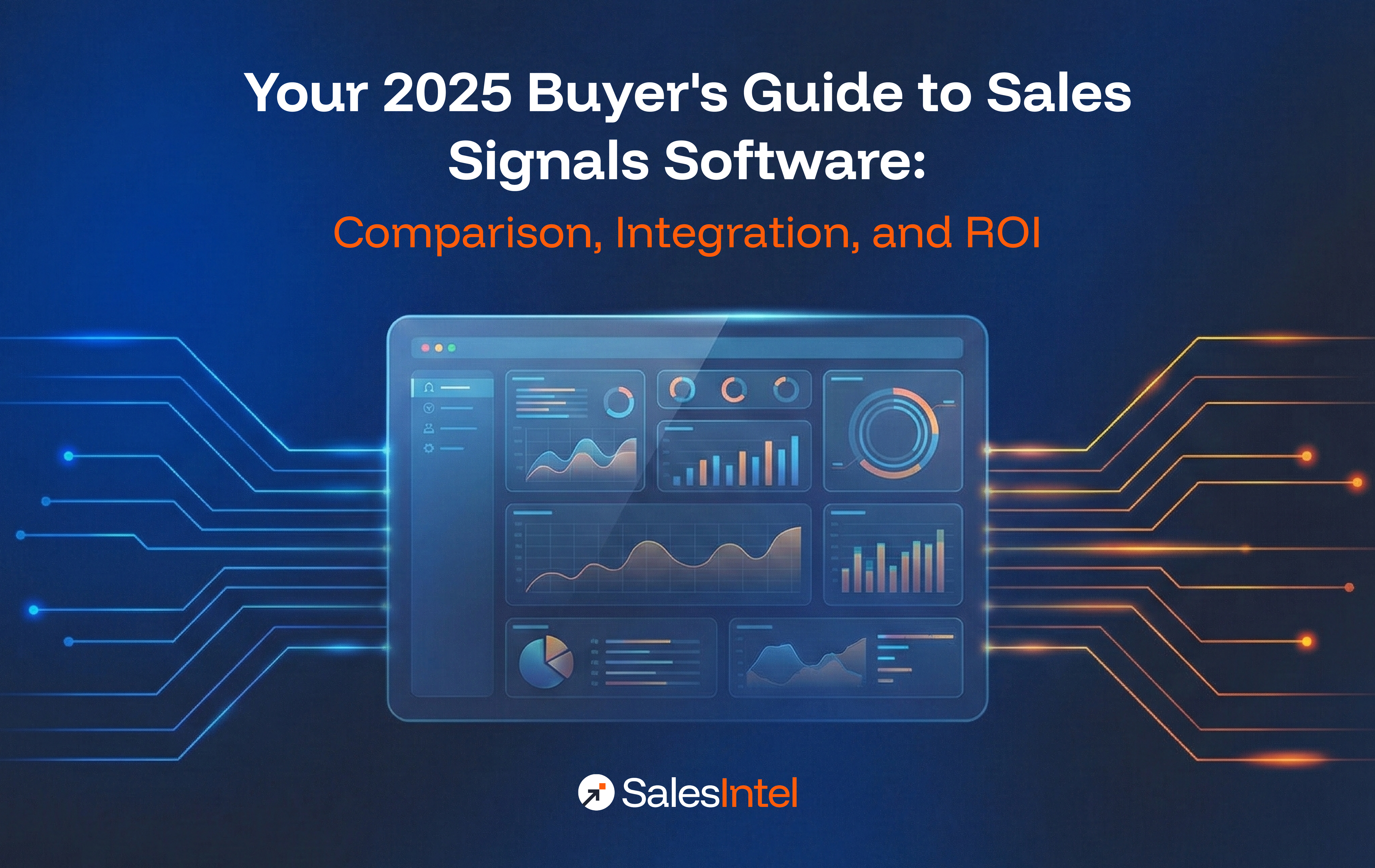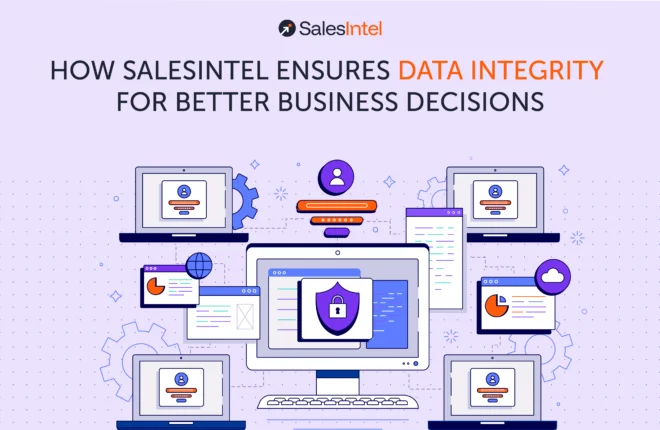Picture this. Two salesmen are selling the same product at a bustling conference.
Let’s call them John and Noah.
John is delivering generic pitches, enthusiastically talking about the company he represents and their products. There are a lot of people buzzing around his booth. Noah, on the other hand, is sitting relaxed, with not much of a crowd around. Those who approach him seem to linger, spending at least five minutes in a deep conversation.
As the event draws close, John and Noah clock out and check their reports to see how many leads they have generated. Guess what they find? Noah has acquired more prospects. John is stunned. But I talked to more people, he wondered.
As they left the event, John asked Noah how he secured more prospects.
Noah said, “I talked to them about their goals, pain points, and budgets. Based on the data I gathered, I only pitched my products to those prospects who might need them and could afford to buy them. I explained to them exactly how our products could resolve their problems. Guess it helped them see our products as a solution and sign up for a trial.”
This… this is the power of knowing your target market!
Businesses today may have the option to market their products to consumers worldwide. However, that doesn’t mean every consumer will be interested in a certain product. This is where a thorough understanding of your target market comes into play.
Identifying your target market can significantly affect everything your business does—from refining your product offerings to creating campaigns that resonate with your ideal buyers. It is, in fact, the most important item on your “starting a business” checklist.
Want to know how you can identify your target market to maximize your marketing efforts and improve sales? Here is our step-by-step guide to knowing your ideal buyers better.
But first, let’s define what a target market is.
What is a Target Market?
Think of it as your core group of customers. A target market is a specific group of people who are most likely to buy your brand’s products or services.
These are the kind of customers you must be laser-focused on attracting to your brand—people whose needs and motivations align perfectly with your offerings, inciting them to make repeat purchases, recommend your products or services to peers and acquaintances, and advocate for them on social media.
Your target market is defined by demographic characteristics like age, gender, occupation, and income, as well as psychographic traits like lifestyles, habits, values, and interests.
Analyzing consumers based on these criteria can help you build an ideal customer persona who is primed to buy from you. Knowing a target market also helps a business invest its advertising dollars wisely into platforms where such people are active and tailor messaging to better convert prospects into customers through organic marketing efforts.
Why Identifying Your Target Market Matters in 2025?
81% of consumers today prefer companies that offer personalized experiences.
That’s not all.
75% of consumers say they will shop from a brand that supports a social cause they feel strongly about.
So, how do you find out what matters to your potential customers? By identifying your target market and analyzing the needs and preferences of your ideal buyers, of course.
Identifying your target market comes with many more benefits, such as:
Increasing Returns on Investment (ROI)
ROI is a metric that drives most marketing activities, from the channels you invest in to the software you use to implement your marketing efforts. Knowing your target market lets you focus resources on strategies that resonate with your audience. Tailored messaging and personalized campaigns reduce wasted effort and attract higher-quality leads, increasing conversions and resulting in a better return on investment.
For example, Nike used target market analysis to identify athletes and fitness enthusiasts who would resonate with its “Just Do It” campaigns. This helped them supercharge their sales and revenue and establish the brand as a marketing powerhouse. One great ad example is the “Just Do It” campaign featuring Colin Kaepernick, which generated a staggering $6 billion in sales. It is amazing what targeting the right market can do, right?
Developing a Brand Voice
Developing a brand voice is a hidden benefit of understanding your target market. Think about it—brands like Coke evoke happiness, while Chanel represents elegance. A memorable brand personality attracts prospects and strengthens customer connections.
A well-defined target audience helps you do that. When you know the kind of consumers you are selling to and what questions they may ask, you can fashion your communications and advertisements to address those queries in your unique tone of voice.
For instance, Apple’s target audience comprises tech-savvy individuals seeking functional, stylish, and durable products. This insight has shaped Apple’s brand personality to exude creativity and innovation. Their sleek advertisements emphasize simplicity and ease of use, resonating perfectly with their audience. Analyzing its target market has helped Apple craft a brand voice that aligns with users’ aspirations, making the brand unforgettable.
Cultivating Brand Loyalty
Cultivating brand loyalty is about authentically communicating your values to people who align with them. Customers want to feel heard and understood. By analyzing your target market’s preferences, behaviors, and values, you can create personalized experiences that foster trust and emotional connections, leading to repeat purchases. Additionally, when customers feel understood and valued, they become advocates, promoting your brand through word-of-mouth. Target market analysis also helps identify and address pain points, ensuring consistent satisfaction.
For example, Patagonia targets people who love the outdoors and care about how humans impact the environment. Analyzing its audience has led Patagonia to create campaigns that promote sustainability. One great ad example would be their “Worn Wear” campaign that urged customers to trade in their previous gear for credit and allow the brand to repair and give away the used products to someone who needs them. This campaign helped the company reach an 88% market sell-through rate and, what’s more, gain brand advocates worldwide, cementing itself as a trustworthy brand that cares.
Gaining Competitive Advantage
Understanding your own target audience may be key, but you can also use it to capitalize on gaps competitors may be missing. Yes, we are talking about competitor analysis here.
You can analyze your competitors’ audiences to see what kind of people they are targeting and whether their ideal customer persona matches yours. This will help you determine whether you are targeting the correct audience for your brand.
Identifying your target audience also enables you to craft products, services, and marketing messages that align with their specific preferences and pain points. This tailored approach gives your brand a competitive advantage in crowded markets.
Maximize Your Time and Resources
Last but not least, focusing your attention on targeting a specific group of people who are most likely to be interested in your products and services can help you maximize your time and resources while increasing the impact of advertising and outreach.
Moreover, understanding the pain points, behaviors, and preferences of your target market can help you elevate your product development efforts, leading to offerings that are well-suited to the latter’s unique needs. This understanding can further enable smarter decisions regarding pricing and customer service that align with your potential customers’ needs. Thus, you can consistently deliver value to your target audience, fostering sustainable growth.
Steps To Identify Your Target Market
Ready to get started? Here is your step-by-step guide to identifying your target market:
Analyze Your Brand’s Offerings
Analyzing your offerings is the first critical step in identifying your target market because it helps you understand the value you provide and how it aligns with specific customer needs.
To do this, you must start by evaluating the key features, benefits, and unique selling points (USPs) of your product(s) or service(s). Points to consider include what problems they solve, the challenges they address, and the goals or lifestyles they support.
For example, if you sell eco-friendly cleaning products, the value of your offering lies in its sustainability and safety, appealing to eco-conscious consumers. By understanding these attributes, you can narrow your focus to customers who prioritize health, sustainability, and ethical consumption.
This analysis helps you define your ideal customer profile—whether by age, location, lifestyle, or purchasing behavior—ensuring your marketing and sales efforts resonate with those who need your product most. This step lays the foundation for crafting targeted and effective campaigns that drive meaningful results for your brand.
Conduct Market Research
Once you have figured out what your product or service does best, it is time to conduct market research. This step involves gathering data about your potential customers, including their demographic and psychographic attributes (as highlighted above).
Market research involves collecting two types of data: primary and secondary.
Primary data is firsthand information gathered directly from your target audience through focus groups, interviews, and surveys. You can ask potential and existing customers specific questions tailored to your business, such as customer pain points, buying habits, and decision-making processes. You can also use consumer data from past purchases and transactions to map out purchase drivers and consumer sentiment. Primary data is highly relevant, offering direct insights into your audience’s motivations.
Secondary data is information already collected and published by third-party sources, such as industry reports, market studies, and government databases. This type of data provides a broader perspective on market trends, demographics, and competitive landscapes. You can gather secondary data from resources like Statista and Pew Research or customer research reports from McKinsey, Deloitte, and other multinational corporations. Secondary data can be effective for ad targeting, as it helps you identify patterns and opportunities you may not have considered. You can also look at your POS or CRM to acquire secondary data.
Create Detailed Buyer Personas
Data is not very insightful, but parsing and segmenting that information is. This process is known as market segmentation, which ultimately leads to creating a buyer persona or an ideal customer profile (ICP). An ICP is a summarization of all the attributes of your core customer group, including their interests, pain points, and demographics.
But why is it important to segregate your target market? Answer: The clearer you draw lines, the better you can target your ideal buyers with ads and content about your brand.
For example, age can tell you which social media channels your ICP typically uses, income can tell you if your pricing strategy is working, and location can tell you where your ICP predominantly lives, propelling you to localize your offerings in their preferred language.
Tapping into social media insights can be particularly useful in market segmentation based on psychographic data. Analyzing engagement rates and audience responses can provide valuable data about your target customers’ interests, behaviors, and preferences. For example, a tech-savvy yet eco-conscious professional who interacts with your brand regularly on social media will most likely purchase one of your products if you start being vocal about your commitment to eco-friendly manufacturing practices.
Creating detailed buyer personas manually can be exhausting, which is why we recommend using tools like SalesIntel. SalesIntel provides high-quality data intelligence to help users find best-fit and in-market target accounts by leveraging buyer intent data, website visitor intelligence, and company and industry news.
Research Your Competitors
Unless you are selling a very niche product, chances are you will face tough competition in the market. This is why successful brands invest their precious time and money into competitor research—and you should, too!
Identifying your top competitors and analyzing their marketing and sales strategies is crucial to understanding your target market. Competitor analysis not only helps you understand what gaps your brand can capitalize on to set itself apart but also helps you spot industry trends and set benchmarks for future success.
For example, say your company sells premium fitness apparel. Your top competitor dominates 75% of the market by catering to gym enthusiasts and professional athletes. To differentiate, you could target beginners or individuals interested in casual fitness activities like yoga or walking, offering comfortable, stylish options that suit their needs.
You could also use competitor analysis to excel in areas where your competitors may be missing out, such as customer service.
Test and Refine Your Audience Segments
Understanding your target market is an ongoing process, which means that you need to continuously test and refine your audience segments based on ever-evolving customer preferences and behaviors.
Conducting social media polls, talking to preexisting customers in your niche market, and using feedback from your focus groups can give you a new perspective on your business. You can parse this data based on questions such as:
- What problems do your customers wish to solve? Are they satisfied with the current solutions they are using?
- What are the pain points associated with their current products or services?
- How do they want to access your product or service? Where do they go to make their buying decisions?
- Will your target market benefit from your product or service?
- Can your target market afford your product or service? If so, how often can they afford to purchase it?
- How does your target audience want to be communicated to? Is your messaging accessible based on their preferences?
The answers to these questions can help you refine your ICPs and simultaneously improve your targeting and messaging strategies. Based on these insights, you can pivot to different social media platforms, incorporate new features into your product that your target audience will love, and even uncover untapped opportunities to target new markets.
Conclusion
Running a successful business is not easy, but knowing who you are selling to can help you capture demand and turn profits. Consumers today are increasingly distracted, with more and more brands vying for their attention (and the money in their wallets). In light of this, targeting the right people with the right products and messaging is critical to success.
Knowing how to identify your target market is also the first step in creating an authentic marketing strategy that truly resonates with your ideal buyers. Remember, not everything appeals to everyone, and while it may be tempting to blanket a larger audience, you cannot sell your products to those who don’t need them. You can leverage our step-by-step guide to start identifying your target market right now, and if you want to dive deeper and target specific accounts, you can sign up to use SalesIntel.
Book a demo to see how SalesIntel can help you build your pipeline with high-quality target prospects and close more deals, helping you maximize your business revenue today.




